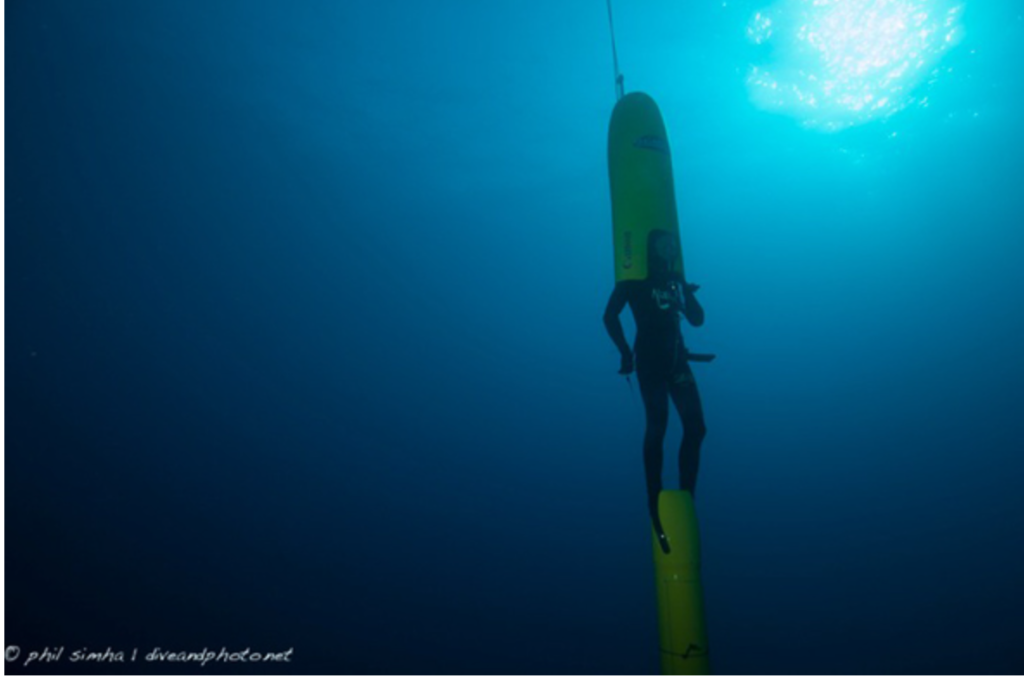
Blog #1
What is the maximum depth for a freediver, scuba diver, and submersible?
How deep can a diver go without breathing equipment?
Well, it will all depend if you are going with or without equipment. For most untrained people that want to dive without any equipment in a swimming pool, the max depth is around 6 feet and holding their breath for a few seconds. However, divers can get a formal freediving training, from static apnea to no-limits apnea (freediving categories) and go deeper and stay longer.
At the moment of writing this article, the world record of no-limits apnea belongs to Herbert Nitsch, he went to a depth of 702 ft (214m) set in Spetses, Greece in 2007. Breath holding or static apnea is 11 minutes 54 seconds! This is a Guinness world record for static apnea without oxygen and it has been held by Branko Petrovic since 2014. As you might guess, these are top-notch professionals of freediving, but it demonstrates how the human body can adapt with extensive and proper training. The risk of decompression sickness or shallow-water blackout due to hypoxia increases dramatically at those depths.
How deep can a diver go with equipment?
If you are planning to dive with equipment after a formal training and certification (see ARGento Diving), there are two main categories: recreational or technical diving. PADI recreational diving certification will allow you to dive up to an absolute maximum of 130ft (40m) but not recommended, narcosis potentially increases after 100ft. On the other hand, PADI technical diving certification requires the usage of trimix gas (Oxygen-Nitrogen-Helium) instead of regular air, and during this course dives are planned to a maximum of 295ft (90m), although this certification is unlimited. Tec divers may explore beyond 328ft (100m) if they are very experienced.
What about submersibles?
In contrast to submarines, submersibles are not fully autonomous, and most of them need a support facility for power and breathing gases. Submersibles have been able to dive to over 33,000ft (10,000m) below the surface overcoming high levels of pressure. As a reference, at 33,000ft of depth the pressure is 1000 times higher than the atmospheric pressure on land.
The Bathyscaphe Trieste was a deep-diving crewed submersible that reached for the first time the deepest part of the ocean at the bottom of the Mariana Trench, a place named Challenger Deep, that is to be between 35,797ft (10,911m) and 36,070ft (10,994m). Trieste submersible reached this point on January 23rd of 1960!
Moreover, a decade ago “Titanic” Director James Cameron dove to the same Challenger Deep with his submersible named Deepsea Challenger on March 26, 2012 reaching the bottom at 35,787ft (10,908m) with less than one-tenth the weight of its predecessor Bathyscaphe Trieste.
In conclusion, with or without equipment a very well trained human body can handle the high pressure of 702ft of seawater, 21.27 times higher than the atmospheric pressure! Clearly, we are very resistant to being compressed under pressure because we are made of ~70% water and liquids are essentially incompressible. However, gases are very much compressible and all our air spaces will compress under pressure. That’s why it is important to equalize our ears and sinuses when we initiate our descent. Also, never hold your breath (rule #1) to maintain our lungs equalize all the time and avoid serious injuries.
Recently, Titan, a crewed submersible operated by OceanGate, was trying to reach the wreck of the Titanic at 12,500ft (3,353m) has imploded under the pressure of the water due to the materials used in the submersible construction, resulting in the instantaneous deaths of all five occupants.
by Jorge Schettini
PhD Biological Sciences
PADI Instructor #428145
ARgento Diving School
Framingham, MA
Social share
-
Facebook
-
Twitter
-
Pinterest
-
Linkedin

 ICONIER Digital Agency
ICONIER Digital Agency